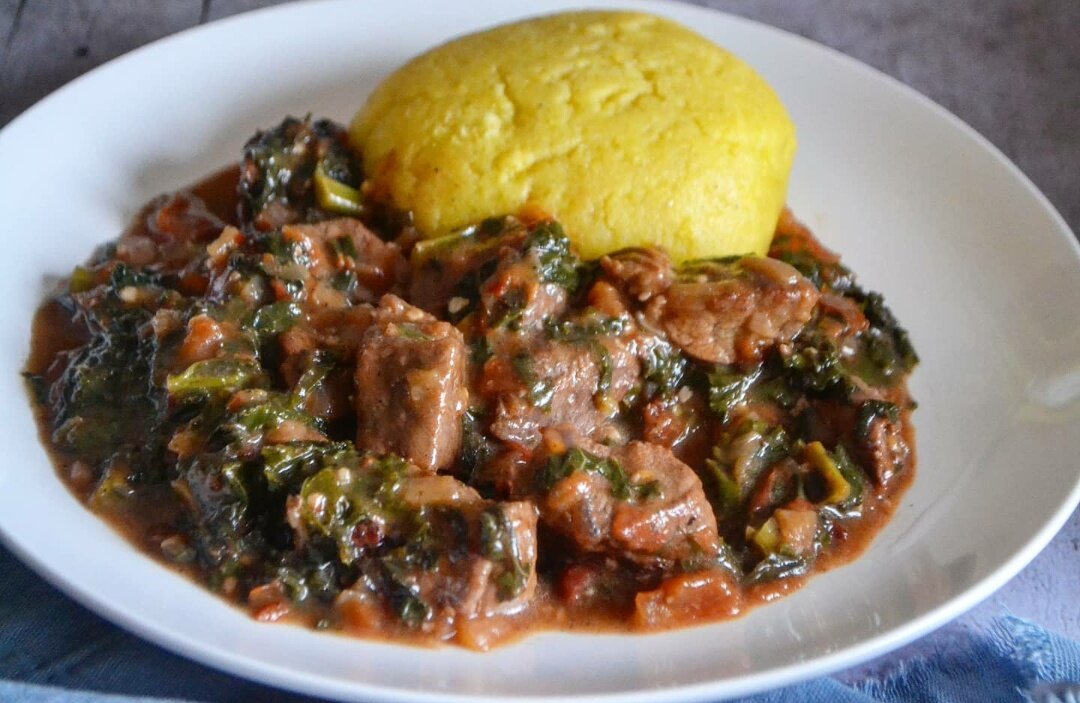When it comes to comfort food, few dishes can match the heartwarming and satisfying flavors of Zimbabwean Sadza and Nyama. This iconic combination is a staple in Zimbabwean cuisine and holds a special place in the hearts and palates of the nation. With its simple yet delicious components, Sadza and Nyama provide a comforting and filling meal that showcases the cultural richness and culinary heritage of Zimbabwe. Let’s explore the origins, preparation, and the delightful flavors that make this dish so beloved.
Origins and Cultural Significance
Sadza, also known as “isitshwala” or “pap,” is a cornmeal porridge that has been a dietary staple in Zimbabwe for generations. The dish has its roots in the traditional cooking methods of the Shona and Ndebele people, who have been cultivating corn (maize) as a primary crop for centuries.
Nyama, which means “meat” in the Shona language, refers to the accompanying meat dish that is typically served alongside Sadza. It can include various types of meat, such as beef, chicken, or goat, prepared in different ways depending on personal preferences and regional variations.
Sadza and Nyama are more than just a meal; they represent a sense of cultural identity and unity. In Zimbabwean culture, sharing a meal of Sadza and Nyama with family and friends is a symbol of togetherness, hospitality, and communal bonding.
Preparation and Flavors
Sadza is made from finely ground white cornmeal, which is mixed with water and cooked over low heat until it thickens into a smooth and dense porridge-like consistency. The cornmeal is stirred continuously during the cooking process to prevent lumps from forming and to achieve the desired texture.
Nyama, the meat component, can be prepared in various ways. It can be stewed, grilled, roasted, or braised with a combination of onions, tomatoes, garlic, and a medley of spices. The choice of meat and the cooking method greatly influence the flavors and textures of the final dish. The meat is typically cooked until tender and flavorful, creating a succulent and rich accompaniment to the Sadza.
The combination of Sadza and Nyama creates a delightful contrast of flavors and textures. The smooth and slightly grainy consistency of the Sadza provides a neutral base that complements the robust and savory flavors of the meat. The rich flavors from the meat juices infuse the Sadza, creating a harmonious blend that tantalizes the taste buds.
Eating Sadza and Nyama is an experience in itself. Traditionally, diners use their hands to pinch off a small portion of Sadza and roll it into a compact ball. They then use the Sadza ball to scoop up a piece of meat, allowing the flavors to meld together in each mouthful. This tactile and communal dining experience adds to the overall enjoyment of the meal.
Cultural Variations and Accompaniments
While Sadza and Nyama are the core components of the dish, there are regional and cultural variations across Zimbabwe. In some regions, Sadza may be made from other grains such as millet or sorghum, reflecting the local agricultural practices.
Sadza and Nyama are often accompanied by relishes, which are flavorful side dishes that enhance the meal. These can include vegetables like spinach, kale, or pumpkin leaves, as well as legume-based dishes like dovi (peanut stew). These relishes add nutritional value and a variety of flavors to the overall meal.
In recent years, Sadza and Nyama have also been served with international additions such as salads or fried potatoes, reflecting the evolving culinary landscape and diverse influences in Zimbabwean cuisine.
Sadza and Nyama embody the essence of Zimbabwean cuisine, bringing together the comforting flavors of cornmeal porridge and savory meats. This traditional combination reflects the cultural heritage and communal values of the Zimbabwean people. Whether enjoyed at home with loved ones or in a local restaurant, the comforting taste of Sadza and Nyama brings a sense of warmth and nostalgia to the table. So, take a bite of this quintessential Zimbabwean dish and savor the flavors that have been passed down through generations, creating a culinary legacy that continues to unite and nourish the nation.








